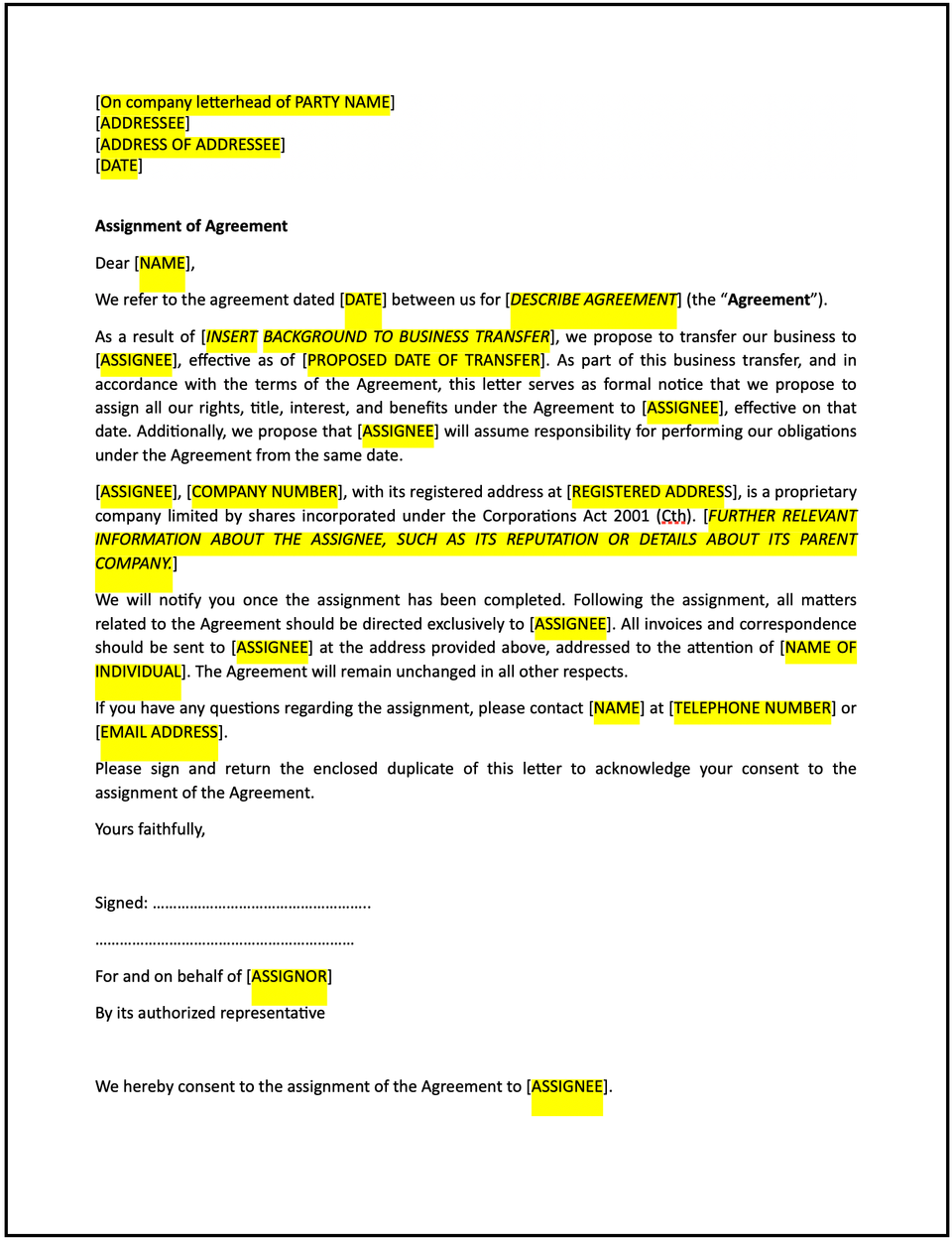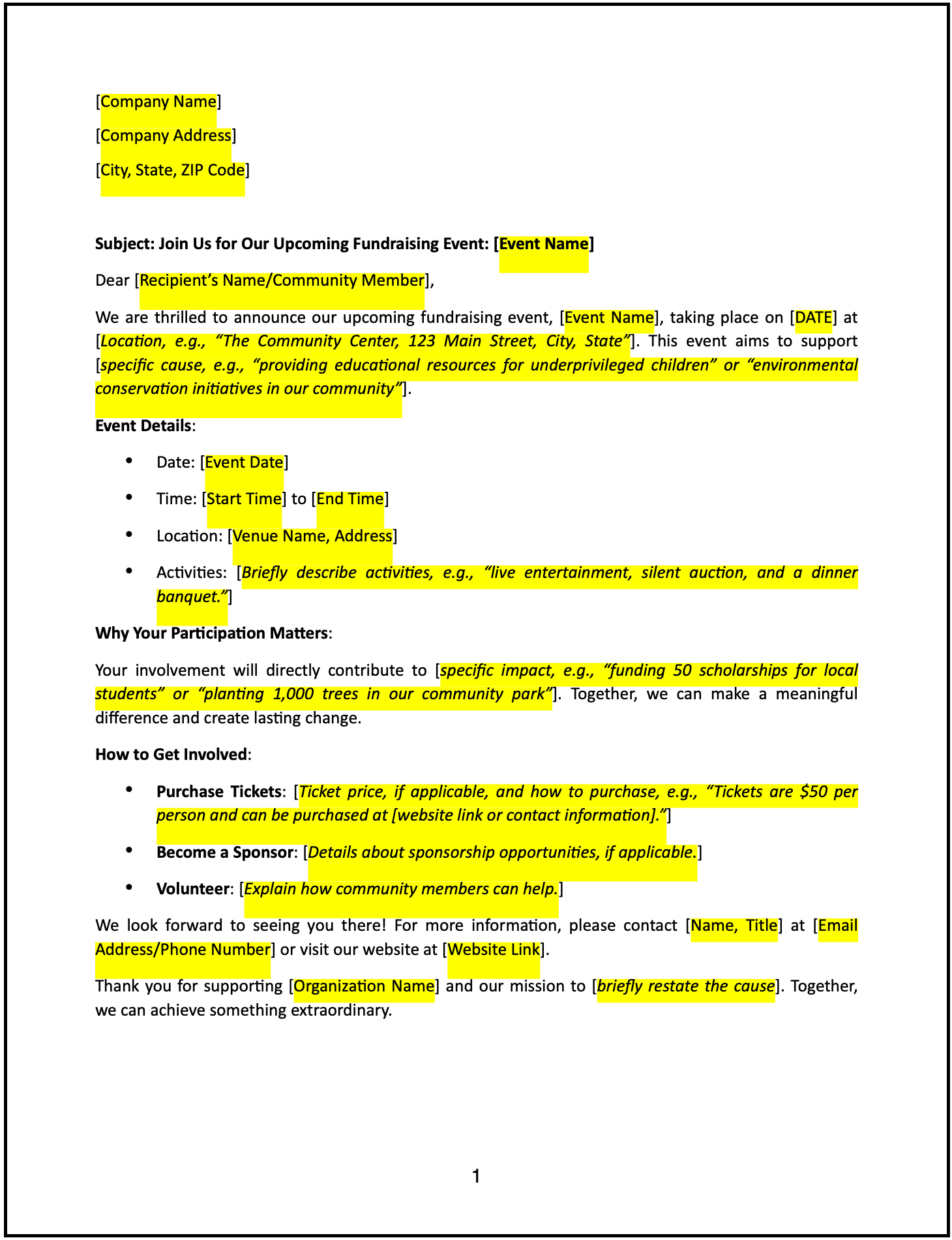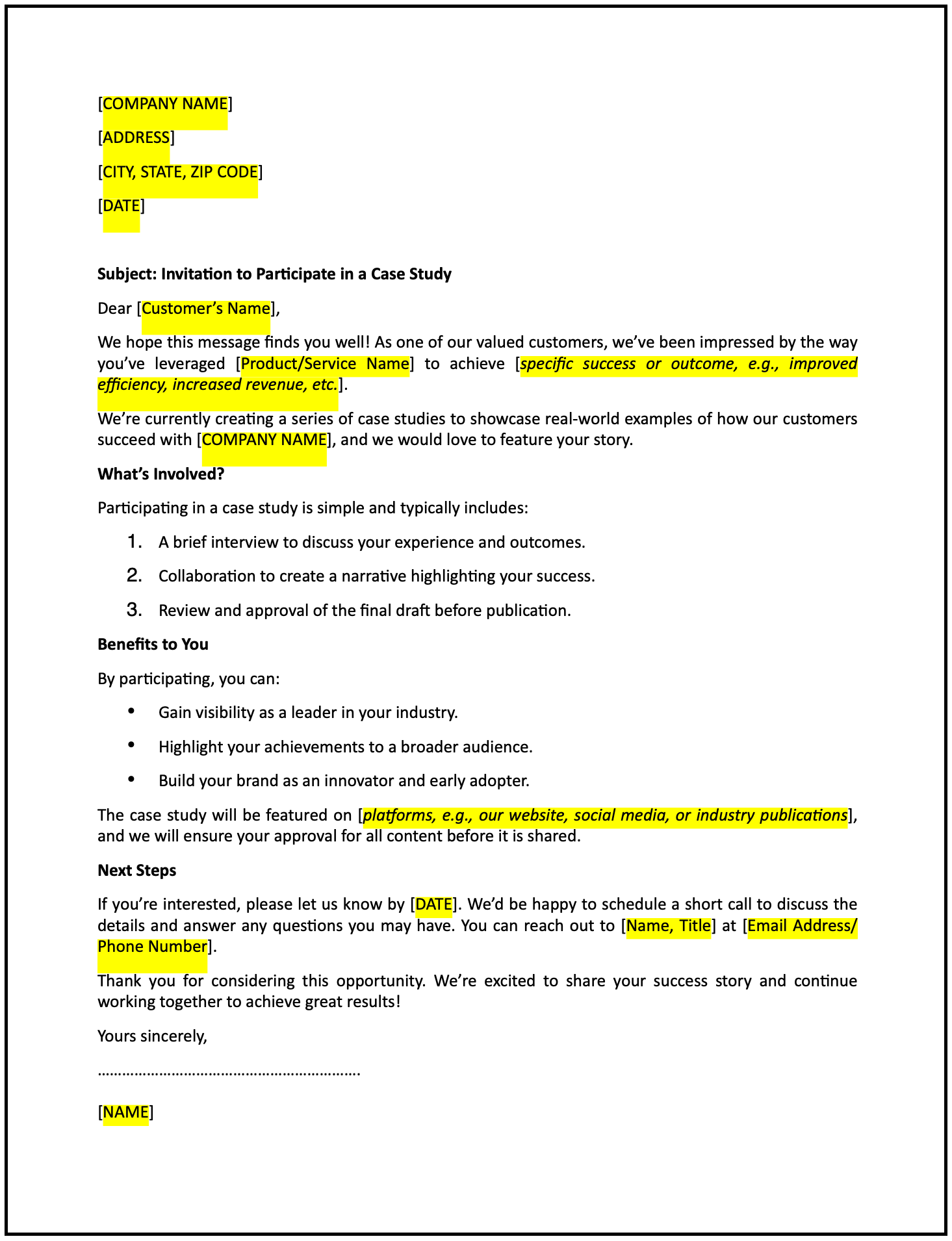Request for consent to assignment (with subcontracting option) letter: Free template

Request for consent to assignment (with subcontracting option) letter
Seeking consent for assignment with a subcontracting option ensures that all parties are aligned and comply with the contract's terms. This letter provides a professional way to request approval for assigning rights and obligations under the agreement, while also proposing the inclusion of subcontracting, if applicable.
How to use this request for consent to assignment (with subcontracting option) letter
- Reference the contract: Clearly identify the contract, including its title, reference number, and the parties involved. Specify the clause requiring consent for assignment.
- Explain the request: Clearly state the intent to assign the contract, identify the assignee, and provide details about the subcontracting option, if applicable.
- Provide rationale: Briefly explain why the assignment or subcontracting is necessary and how it will benefit or impact the agreement.
- Outline key details: Include specific information about the assignee or subcontractor, such as qualifications, experience, and intended role in fulfilling obligations.
- Maintain a professional tone: Ensure the letter is respectful, factual, and solution-oriented to foster collaboration.
- Request acknowledgment: Ask the other party to confirm receipt of the letter and provide their consent or feedback within a specified timeframe.
Benefits of using a request for consent to assignment (with subcontracting option) letter
This letter template provides a clear and professional way to seek consent for assignment and subcontracting while maintaining transparency and alignment. Here’s how it helps:
- Ensure compliance: The letter confirms adherence to the contract’s terms requiring consent for assignment.
- Foster transparency: Proactively communicating the request builds trust and avoids surprises.
- Minimize disputes: Addressing the request formally reduces the risk of misunderstandings or conflicts.
- Demonstrate professionalism: A well-crafted letter reflects respect for the other party and the agreement.
- Provide documentation: The letter serves as a formal record of your request, which can be useful for legal or auditing purposes.
Tips for writing an effective request for consent to assignment (with subcontracting option) letter
- Be specific: Clearly reference the contract and the relevant clause requiring consent for assignment.
- Provide context: Explain the reasons for the assignment and the subcontracting option, if applicable.
- Use professional language: Maintain a respectful and collaborative tone to foster positive discussions.
- Include details about the assignee: Provide relevant information about the proposed assignee or subcontractor to build confidence.
- Keep it concise: Focus on the key points and avoid unnecessary details or commentary.
Frequently asked questions (FAQs)
Q: What details should I include in this letter?
A: Include the contract reference, the proposed assignee or subcontractor, the rationale for the request, and any relevant qualifications or information.
Q: Should I provide evidence supporting the assignee's capabilities?
A: Yes, including qualifications, experience, or references for the assignee or subcontractor strengthens your request.
Q: Who typically receives this letter?
Q: Who typically receives this letter?
Q: How formal should this letter be?
A: The tone should be professional and collaborative, reflecting the importance of obtaining consent.
Q: When should this letter be sent?
A: Send the letter well in advance of the planned assignment or subcontracting to allow sufficient time for review and approval.
Q: Can this letter include terms for subcontracting?
A: Yes, you can outline specific terms or roles the subcontractor will fulfill to provide clarity.
Q: Is acknowledgment from the other party required?
A: Yes, acknowledgment ensures alignment and confirms the request has been received and understood.
This article contains general legal information and does not contain legal advice. Cobrief is not a law firm or a substitute for an attorney or law firm. The law is complex and changes often. For legal advice, please ask a lawyer.


